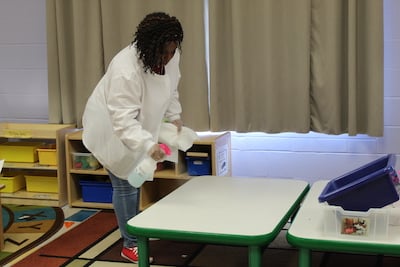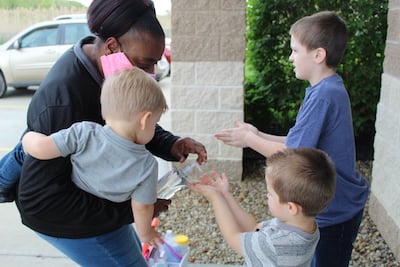 A significant percentage of children will be attending school online this fall, either in full or in part—and, for many of them, this is a brand-new experience. Fortunately, there are plenty of things that parents can do to help their children transition to online learning.
A significant percentage of children will be attending school online this fall, either in full or in part—and, for many of them, this is a brand-new experience. Fortunately, there are plenty of things that parents can do to help their children transition to online learning.
Create the Structure
Understood, a non-profit organization, suggests that you set aside a specific place for your school-age child to study and do homework assignments. The area should be quiet, without clutter, a place where your child can focus with as few interruptions as possible. It should also contain all of the materials needed to complete the day’s assignments.
The organization recommends that parents also create a schedule for online learning that works well for the family and then have children stick to it. One family, for example, might decide to follow the same general schedule that a child’s school would use. Another family might decide to have an older child who performs well in the morning start his or her schoolwork first. A younger child could start an hour or two later when a parent is more available to offer support.
You might decide to post a large calendar on a wall or bulletin board in the area of the house set aside for learning. On it, you could color code due dates by child or by subject. If there is any confusion about what’s required—and by when—it’s important to work closely with the teacher to help your child meet expectations.
Get Up and Move!
Kids get restless (adults do, too!), so it makes sense to build in time for movement. According to the John Hopkins School of Education, taking frequent breaks in the day for some physical activity can ultimately help your child to remain engaged during online learning. Also, consider how some children perform more effectively while standing. If this is true for yours, you can put a computer on a surface that’s raised to the appropriate level.
John Hopkins also notes how it may be helpful to allow your child to take a break when he or she becomes frustrated over an assignment. Even a short break can provide the necessary change of pace, helping your child to tackle an assignment that had previously seemed too challenging.
Sometimes, a child will need to work at a slower pace when the subject is one where he or she needs to process new information. This can be accomplished by breaking material into chunks and allowing your child to address them one at a time.
Reach Out for Help When Needed
Don’t be afraid to ask your child’s teacher for clarification. Also, if your child needs extra help in an area, FamilyEducation.com notes that it is OK to get a tutor. An experienced tutor who is used to helping children maximize their abilities to succeed can make a huge difference.
Remember, attending school remotely does have an impact on a student’s mental health. Being away from others for this extended period of time is a challenge for everyone, so keep this in mind when your child becomes frustrated with the material they struggle to understand. In the classroom, this may have been an easier concept to grasp, or easier to get help. Online courses bring challenges students are still learning to navigate and understand.
Healthy Foods = Healthy Fuel for Learning
The day starts with breakfast — and here’s a blog post of ours that’s full of useful advice about getting your child started off in the most delicious and nutritious ways possible. Here’s another post we’ve created that highlights four cheap and easy breakfasts for those busy mornings.
Consider putting snacks in individual bags with your child’s name on them. This can make snack time super simple on days of online learning. Provide plenty of water, as well.
Because your child is eating all meals at home now—rather than eating lunch at school—it can make sense to shop economically for food. This may mean including beans, rice, and pasta to stretch the meal; making a few meals vegetarian, or otherwise providing healthy choices that fit your family’s budget.
Although having your child learn at home can present challenges, it also gives your family more time to spend together. So, model the attitude you’d like your child to have!






